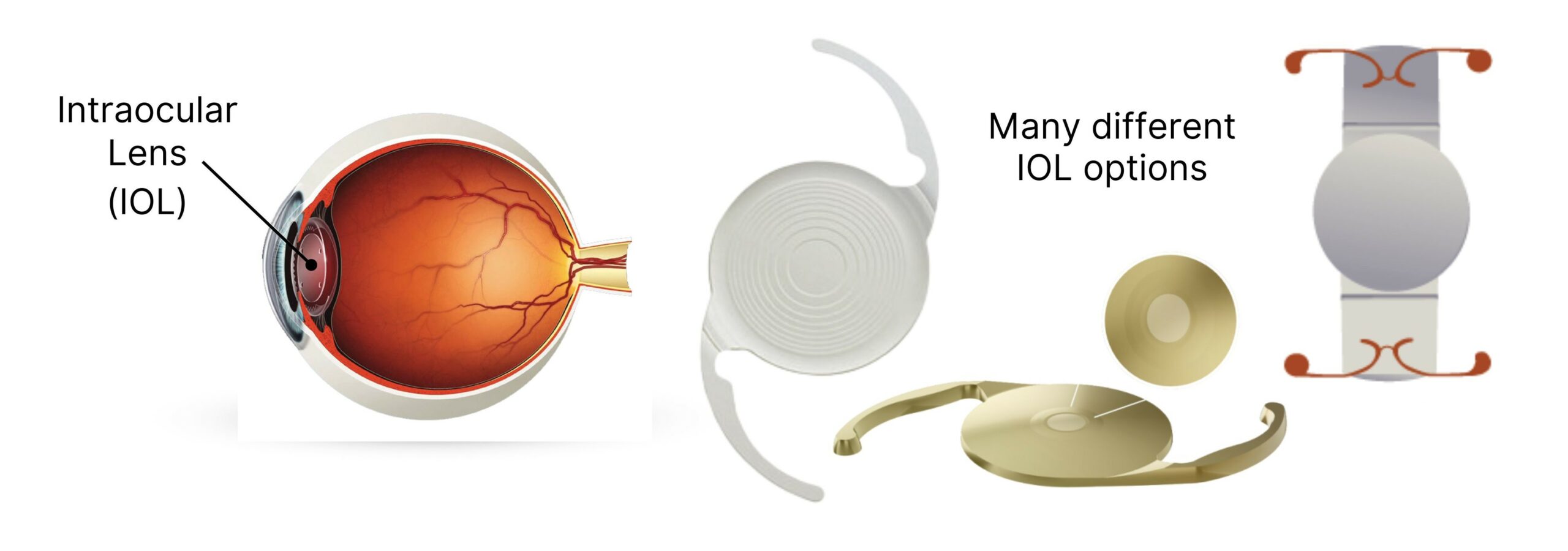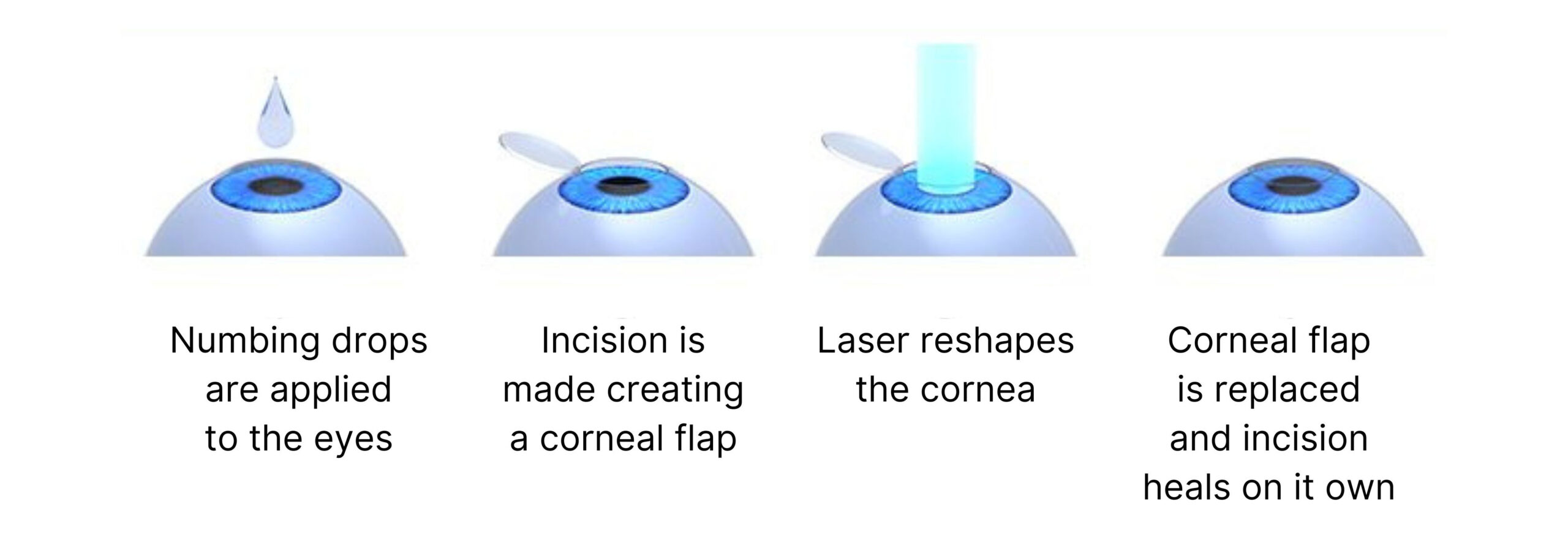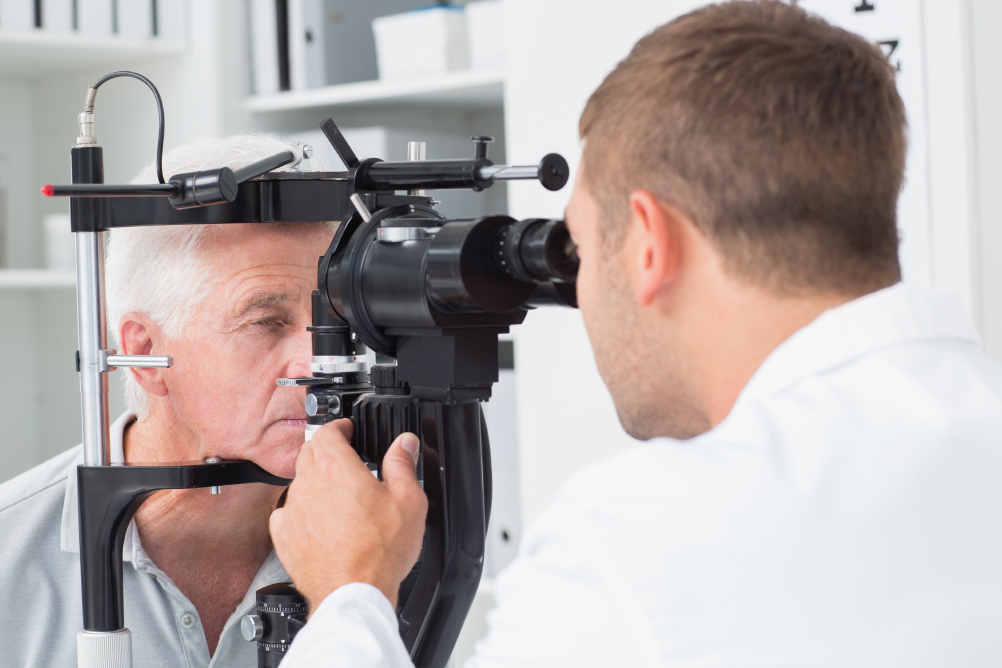Corrective Vision Options
Tayani Institute offers a range of vision correction procedures at their multiple locations in Orange County, California. Whether you are nearsighted, farsighted, or have astigmatism, the experienced ophthalmologists at Tayani Institute can help you achieve clearer vision. The procedures include CLE, LAL, and LASIK, all of which use state-of-the-art technology to correct refraction errors and improve vision. To schedule a consultation call your nearest Tayani Institute clinic or use the convenient online scheduling tool today.

In CLE, also referred to as Refractive Lens Exchange (RLE), the natural lens of the eye is removed and replaced with a silicone or plastic Intraocular Lens (IOL). This artificial lens corrects any existing nearsightedness, farsightedness, and astigmatism. CLE is an option for patients over the age of 40 wishing to get rid of their bifocals, trifocals or the hassle of carrying multiple pairs of glasses. CLE is also a good option for people with early-stage cataracts who want to avoid the need for cataract surgery in the future.
The Benefits of CLE
- Very fast recovery
- Excellent predictability of outcome
- Excellent quality of vision
- No Cataracts, Ever
- Multiple lenses to choose from to fit every lifestyle
Is Clear Lens Exchange (CLE) Right For Me?
CLE is a good option for people who:
- Are over the age of 40
- Have good overall eye health
- Are nearsighted, farsighted, or have astigmatism
- Are not good candidates for LASIK or other surgical vision correction procedures
- Want to improve their vision and reduce their reliance on glasses or contact lenses
- Have early-stage cataracts and want to avoid the need for cataract surgery in the future
See also Cataracts
What is LAL?
The RxSight™ Light Adjustable Lens is the first and only intraocular lens (IOL) that can be customized after cataract surgery. The Light Adjustable Lens is made of a special photosensitive material that can be adjusted in response to ultraviolet (UV) light. This optimization is done by your eye doctor in the weeks following lens implantation through a series of non-invasive light treatments that take only a few minutes each. You will have the unique ability to adjust and preview your vision until it meets your personal desires and lifestyle requirements. The Light Adjustable Lens delivers superior vision outcomes that non-adjustable IOLs cannot match.
Light Adjustable Lens Fast Facts
- The first and only adjustable intraocular lens (IOL) that allows your physician to customize your vision after your cataract surgery
- Patients who received the Light Adjustable Lens followed by adjustments were twice as likely to achieve 20/20 vision at 6 months without glasses as those who received a standard monofocal IOL
- The cataract removal and IOL implantation procedure is the same as if you selected a non-adjustable IOL
- The Light Adjustable Lens is made of a special photosensitive material that changes the shape and power of your implanted lens in response to ultraviolet (UV) light
- You will have the unique ability to preview and compare possible vision outcomes based on your preferences and lifestyle requirements
- Light treatments that precisely reshape your implanted lens are delivered in your doctor’s office to adjust your vision to the desired target
- Light treatments are painless, non-invasive, and last approximately 90 seconds
- You may need 2 to 4 total light treatments over a period of 1 to 2 weeks to reach your vision goals
What is LASIK?

LASIK involves advanced and highly effective laser technology to correct the alterations and deterioration in the shape of your corneas — the transparent layer that forms the front of your eye. LASIK can be used to treat an array of eye conditions and problems including:
- Astigmatism
- Nearsightedness
- Farsightedness
- Presbyopia
Am I a suitable candidate for LASIK eye surgery?
To be a good candidate for LASIK eye surgery, you should have realistic goals about what can be achieved. For many people, LASIK is a permanent solution. However, you might still require corrective eyewear and reading glasses even after your LASIK procedure due to the continuing natural alterations in your eye.
LASIK isn’t suitable for:
- Adolescents or children
- People with herpes, HIV, rheumatoid arthritis, lupus, and other infections or conditions that can affect the eyes
- People with thin corneas, cataracts, dry eyes, glaucoma, or large pupils
LASIK only works to correct certain prescriptions. To be a good candidate, you must have good eye health, and your prescription must have stayed the same for the previous year.
Learn more about LASIK here
What is Orthokeratology?

Orthokeratology, or Ortho-k, is the use of specially designed and fitted contact lenses to temporarily reshape the cornea to improve vision. It’s like orthodontics for your eyes and the treatment is often compared to dental braces. Most Ortho-k lenses are worn at night to reshape the front surface of the eye while you sleep. Vision improvements are reversible but can be maintained if you keep wearing the lenses as directed.
Who is Ortho-k for?
Ortho-k is mainly used to correct near-sightedness (Myopia). This vision problem can also usually be corrected by eye glasses, regular contact lenses, LASIK or PRK. Orthokeratology is a surgery-free way for some people to leave their glasses behind and not have to wear contact lenses all the time.
Ortho-k is sometimes recommended to correct children’s vision. Vision can continue to change for some children into adulthood and their 20’s. Vision correction surgeries like LASIK are not recommended until vision is stable. There is no firm evidence that Ortho-k can slow down the progression of myopia in children, but this is also being studied as a possibility.
How does Ortho-k work?
The cornea is a clear, dome-shaped window in the front of your eye that focuses light onto the retina and is responsible for most of the eye’s ability to focus. Its tissue is very flexible.
Your ophthalmologist or optometrist will map and measure the surface of your cornea using an instrument called a corneal topographer and then design a lens especially for your eye. The cornea map is created by reflecting light off the surface of the eye. The machine doesn’t touch your eye, and there is no pain. The corneal topography map shows your eye doctor the shape and curves of your cornea.
The lenses work by flattening the center of the cornea, changing how light is bent as it enters the eye. Most Orthokeratology lenses are worn overnight to flatten the cornea, then removed during the day. These overnight lenses are rigid, gas-permeable lenses that are sturdy enough to reshape the cornea, but also allow oxygen through so your eye stays healthy.
When Ortho-k lenses are removed the cornea stays flattened for a while and vision is corrected without the need for glasses. If you stop wearing the lenses at night, your eyes will eventually go back to their original shape and the refractive error will return. You have to keep wearing the lenses regularly to keep the vision correction.
Learn more about Ortho-k and Myopia here



